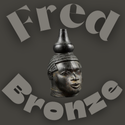Welcome to Our World of Bronze Artistry: Where Tradition Meets Innovation
Celebrating Cultural Heritage
Our bronze sculptures are not merely objects of visual delight; they stand as enduring testaments to the rich cultural heritage of Benin, Nigeria. Benin, renowned for its storied past and artistic prowess, has long been a cradle of bronze artistry, dating back to periods of significant historical relevance. The intricate techniques developed and mastered by the ancient artisans of Benin have been meticulously preserved and handed down through generations, ensuring that each sculpture emanates a palpable sense of history and cultural pride.
The historical significance of bronze artistry in Benin is profound. Dating back to the 13th century, Benin bronze sculptures have depicted regal figures, deities, and everyday life, encapsulating the sociopolitical and spiritual narratives of the era. These intricate creations often incorporate iconic symbols such as the “oba” or king, ceremonial scenes, and emblematic animals, each carrying its own unique cultural significance. Master artisans, through a labor-intensive process involving wax casting and detailed chiseling, bring these symbols to life, embedding them with stories and traditions that are as vibrant today as they were centuries ago.
In preserving and promoting these time-honored techniques and symbols, our goal extends beyond mere artistic expression. By showcasing these sculptures globally, we aim to draw attention to the rich cultural tapestry of Africa, fostering greater recognition and respect for its artistic and cultural contributions to the world. This endeavor not only elevates African art on the global stage but also enriches the collective human heritage, offering a deeper understanding and appreciation of diverse histories, experiences, and aesthetic expressions.
Through our dedication to maintaining the integrity of traditional techniques while embracing innovative expressions, we celebrate the past and present narratives of Benin bronze artistry. It is through this harmonious blend of tradition and innovation that we hope to honor and perpetuate the extraordinary cultural heritage of Benin for future generations.
“`html
Empowering Local Artisans and Communities
Our commitment to empowering local artisans and communities is reflected in the socio-economic initiatives we undertake. By providing employment opportunities and skills training, we have significantly enhanced the livelihoods of numerous artisans. This empowerment leads to positive transformations in their personal and professional lives, catalyzing broader community growth.
One notable aspect of our work is the comprehensive skills training programs we offer. These programs are designed to equip artisans with the latest techniques in bronze artistry while preserving traditional craftsmanship. Through these training sessions, artisans not only hone their skills but also gain confidence and a sense of self-worth. Additionally, our initiatives include workshops and seminars led by experts in the field, providing valuable insights and fostering continuous learning.
We believe that investing in local talent and resources is foundational to economic empowerment and community sustainability. Our collaborations with local artists involve financial support, access to high-quality materials, and networking opportunities, facilitating their integration into larger markets. Such investments yield a substantial economic boost for the community, creating a ripple effect that benefits families and emerging artists alike.
Personal stories of artisans who have successfully advanced their craft through our programs are a testament to the impact of our initiatives. For instance, Maria, a local artisan, transitioned from struggling with limited market access to becoming a renowned bronze artist. Her success story has inspired many in her community to pursue artistry as a viable career, contributing to local cultural preservation and economic stability.
The ripple effect of empowering artisans extends beyond individual growth. By preserving traditional skills and integrating them with modern techniques, we open new avenues for the community’s overall growth and development. This dynamic fosters an environment where heritage and innovation coexist, driving both cultural and economic progress.
“`
